Do you know what your customers see and do before they purchase from you?
They see your ads, interact with you on social media and explore your website before they buy. All these interactions—from the first ad impression to every “Please help” DM customers send—define your customer journey. To keep up with it all and better inform your social media marketing strategy, create a customer journey map as a blueprint to help you understand your customers at each stage.
Let’s explore what customer journey mapping is and how it helps your brand.
What is customer journey mapping?
A customer journey map is a visual representation of each point of interaction your customers have with your company. You can style the map like a flowchart, timeline, table or even on sticky notes.
Creating the map is a great internal exercise. Along the way, you might find pain points or touchpoints you didn’t know existed. A basic customer journey map includes the buying stages (and support touchpoints) a customer goes through.
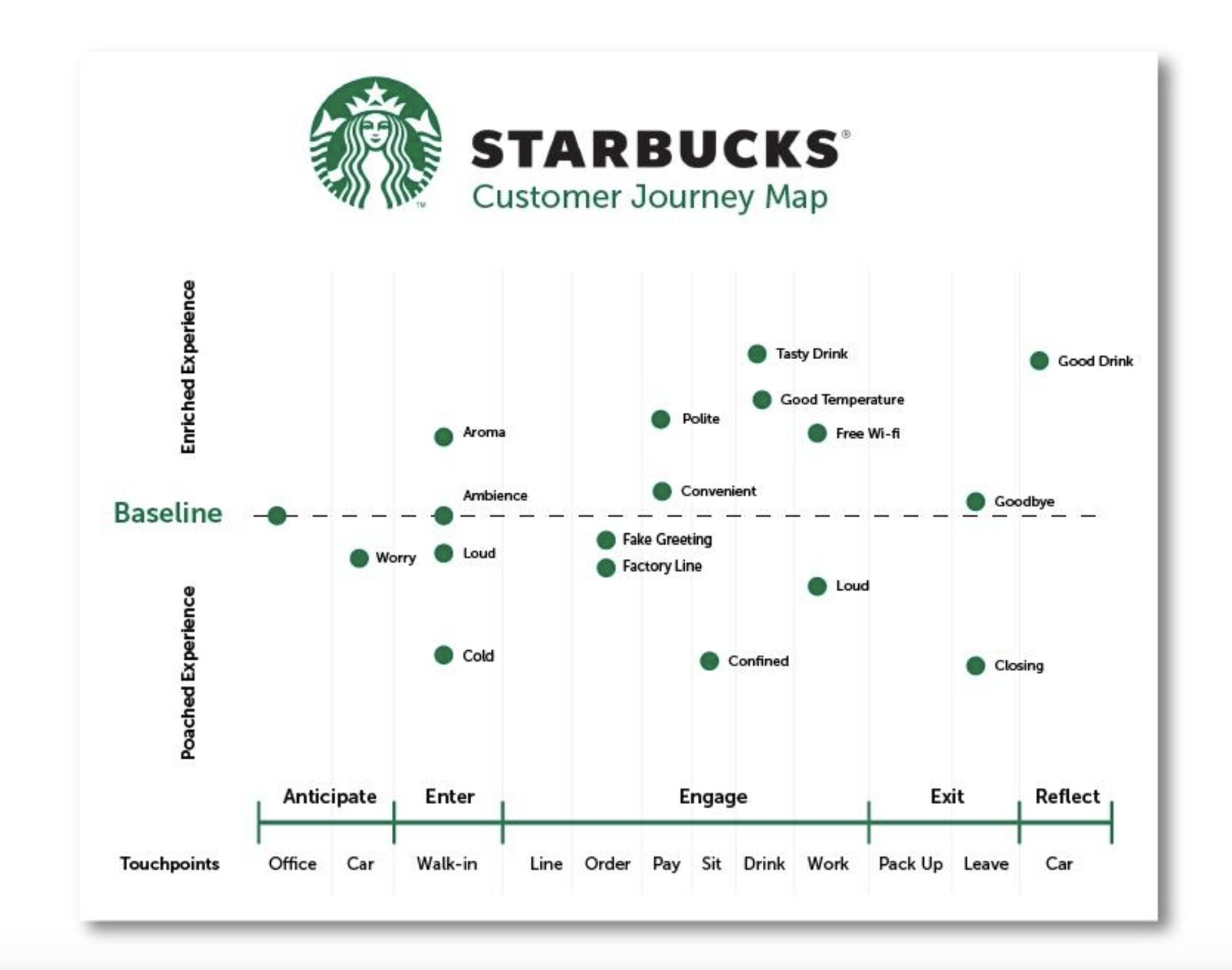
More detailed maps include:
- actions your customers take
- good and bad emotions your customers experienced
- departments involved in customer touchpoints
- content types you serve your customers
- solutions to pain points
What is a customer touchpoint?
A touchpoint on the customer journey map is the point of interaction a customer has with your brand. It doesn’t need to be a two-way interaction. Seeing a social media ad, getting a branded newsletter and asking a friend for a product recommendation are all touchpoints.
Customers may experience emotions and actions at touchpoints. When someone asks for product recommendations, people might mention your brand. You might not serve that recommendation to them directly but someone still introduces you to a potential customer.
What are the benefits of customer journey mapping?
A customer journey map puts the customer first by giving you a deeper understanding of how your customers interact with your brand. This enable you to make better decisions and improve customer experiences.
When coupled with social media market research, they help brands:
- Provide an overview of the resources your customers use. This helps determine the ROI of customer-centric engagement and service. For example, if blogs are your highest traffic sources, investing more in those channels makes sense.
- Identify content gaps. Pain points without solutions are an excellent source for content ideation and development. If customers need help with a specific product issue, for example, but find limited guidance, create in-depth video tutorials to address this pain point.
- Identify inefficiencies. Maybe some processes are repetitive, or some solutions cause more friction. If your customers have trouble checking out due to a complicated form, for example, simplify it to reduce cart abandonment rates.
- Generate marketing campaign ideas. A clear understanding of customer motivations and journey stages creates targeted campaigns. You can provide them with relevant content and incentives to move them closer to a purchase.
- Guide multiple departments. Streamline content creation, social customer care strategy and messaging optimization across every touchpoint. Departments use the customer journey map as a central reference to ensure a consistent and customer-focused approach.
- Enhance customer communication. Customer journey maps reveal critical touchpoints, like social media interactions, for timely and meaningful engagement. In fact, The Sprout Social Index™ shows 51% of customers believe the most memorable brands on social respond to customers.
Every business and industry has its unique customer journey maps, but the fundamentals remain the same.
Recently, our social team talked about using social media for the customer journey in the auto industry. Watch the video below to hear their discussion on touchpoints, customer experience and how legacy brands are going beyond traditional tactics like targeted ads to tell their story.
It’s a great example of how industry-specific customer journey follows the fundamentals but also has touchpoints specific to them.
What’s included in a customer journey map?
A customer journey map is like a detailed travel itinerary for your customer’s experience with your brand. It includes elements like:
1. The buying process
The buying process is the step-by-step path a customer follows to make a purchase decision. It tells you where customers drop off or face obstacles during making purchases.
Use prospecting tools, content management systems (CMS) and behavior analytics tools to gather data. Facebook Shops, Instagram Shopping and TikTok Shop data also provide valuable insights into how customers find products and engage with content via social commerce.
Pro tip: Categorize the journey into stages like awareness, consideration and decision to map these steps horizontally on the customer journey map.
Don’t forget to integrate feedback mechanisms, such as customer surveys or user testing. These offer qualitative insights into the buying process. Understanding the “why” behind customer behavior can be as important as knowing the “what.”
2. Emotions
Emotions show how customers feel at different touchpoints in their interaction with your brand. Emotions heavily influence purchase decisions and brand loyalty which is exactly why it’s so important to include them.
Think about it: When someone has a great experience with your brand and feels happy, they’re more likely to buy from you again. On the flip side, if they feel frustrated or unhappy, they’ll knock on your competitor’s door.
Use surveys or feedback forms to ask customers how they felt during their experience. You might have come across these smileys during your own shopping experience:
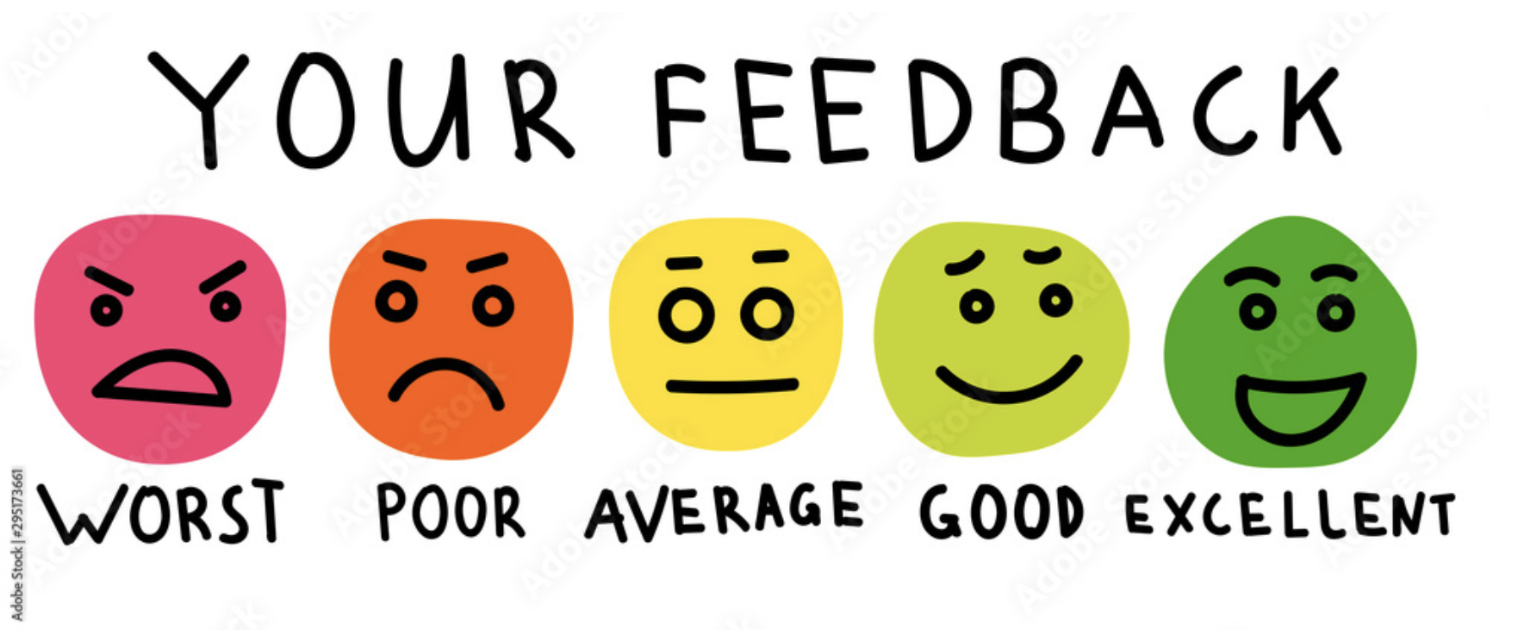
These scales are a convenient way to gauge how your customers feel at any point.
Pay attention to what they say on social media and in reviews. You can tell if they’re happy or upset by their tone.
Tools like Sprout Social use AI-driven sentiment analysis to dig into social listening data to give you insights on what people think about your brand.

These insights are handy when creating emotional marketing campaigns. When you know how customers feel, take actionable steps to solve any negative experiences and encourage positive ones.
3. User actions
User actions are the steps customers take when they interact with your brand. They include steps like visiting your website, clicking on a product, adding items to their cart or signing up for your newsletter.
Actions highlight what people do at each stage. Each of these actions tells you something about what customers are interested in and how close they are to making a purchase.
Analytics tools for your website or app are your best bet for such data. These tools show you which pages customers visit, what they click on and where they drop off.
Once you have this information, tailor your marketing efforts and content to align with the actions customers take at each stage.
4. User research
User research examines what customers search for or where they turn for information during the buying process. This part of the customer journey map helps you understand how customers gather information.
For example, in the awareness stage, buyers often rely on search engines like Google to research solutions to their problems. But it’s not just about where they go—it’s about what they’re looking for. Knowing their specific research topics allows you to address their pain points.
What’s the trick? Keep an eye on what customers search for online. Tracking keywords and phrases they use on search engines, as well as social media market research are good places to start.
Also, monitor discussions and conversations to get a deeper understanding of the questions, concerns and topics that are top-of-mind for your potential customers.
The key is to use this information to provide potential customers with what they need at each stage. Targeted content delivery positions your brand as a valuable source of information.
5. Solutions
This section outlines the actions and strategies your brand implements to address customer pain points and improve their overall experience.
It documents the specific solutions or improvements applied at each stage of the customer journey. These include steps like changes to website design that resolve issues and improve the customer experience.
It visualizes how your brand responds to customer needs and challenges at different touchpoints. Besides that, it’s a good reference to ensure your team implements the solutions and refines them to increase customer satisfaction.
What are the 7 steps to map the customer journey?
A strategic approach to building a map ensures you capture every touchpoint, anticipate customer desires and address potential pain points. Here are seven steps to build a journey map unique to your customers and business needs.
1. Set your goals
What do you want to get out of this process? And why does it matter to your business? Knowing your goals sets the stage for how you assemble your map.
Some examples of goals include:
- Identify the top three customer pain points. Use these pain points to create content.
- Understand customer interests and motivations to develop better products and services.
- Total the cost of customer interactions to set a better social media budget.
2. Decide on a customer journey map type
There are several different customer journey maps and each one has its advantages. When you decide which map to work with, you know which details to focus on.
These are four of the most common types of customer journey maps: current state, future state, day in the life and service blueprint. We’ll go further into detail on each one later on.
Understanding your goals and where your brand stands in its evolution will guide you in selecting the appropriate map type.
3. Create and define your customer personas
Which customers will you focus on? It’s difficult to map a customer journey if you don’t have a customer in mind. Customer personas are fictional characters that represent each of your target customer groups. They’re detailed with everything from demographics to interests to buying behavior.
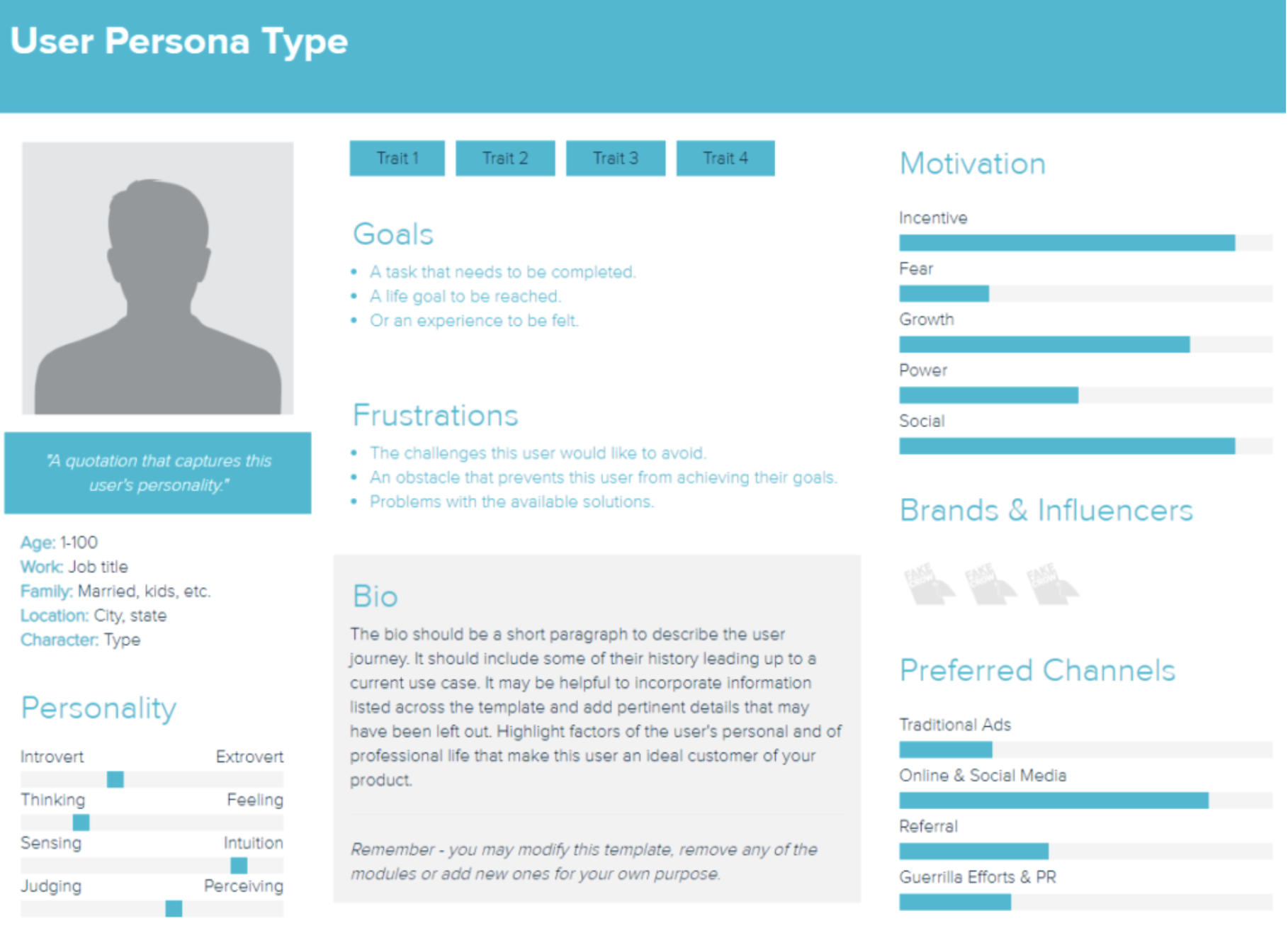
If you’ve already created social media personas to understand your audience, you’re more than halfway there. But if you haven’t, then our buyer persona template or Xtensio’s will be useful. To really get to know someone’s purchase decisions and shopping processes, interview existing customers.
Pro tip: If you have distinctively different personas—such as, if you serve both a B2C and B2B market—set up different customer journey maps.
4. Break it down: touchpoints and stages
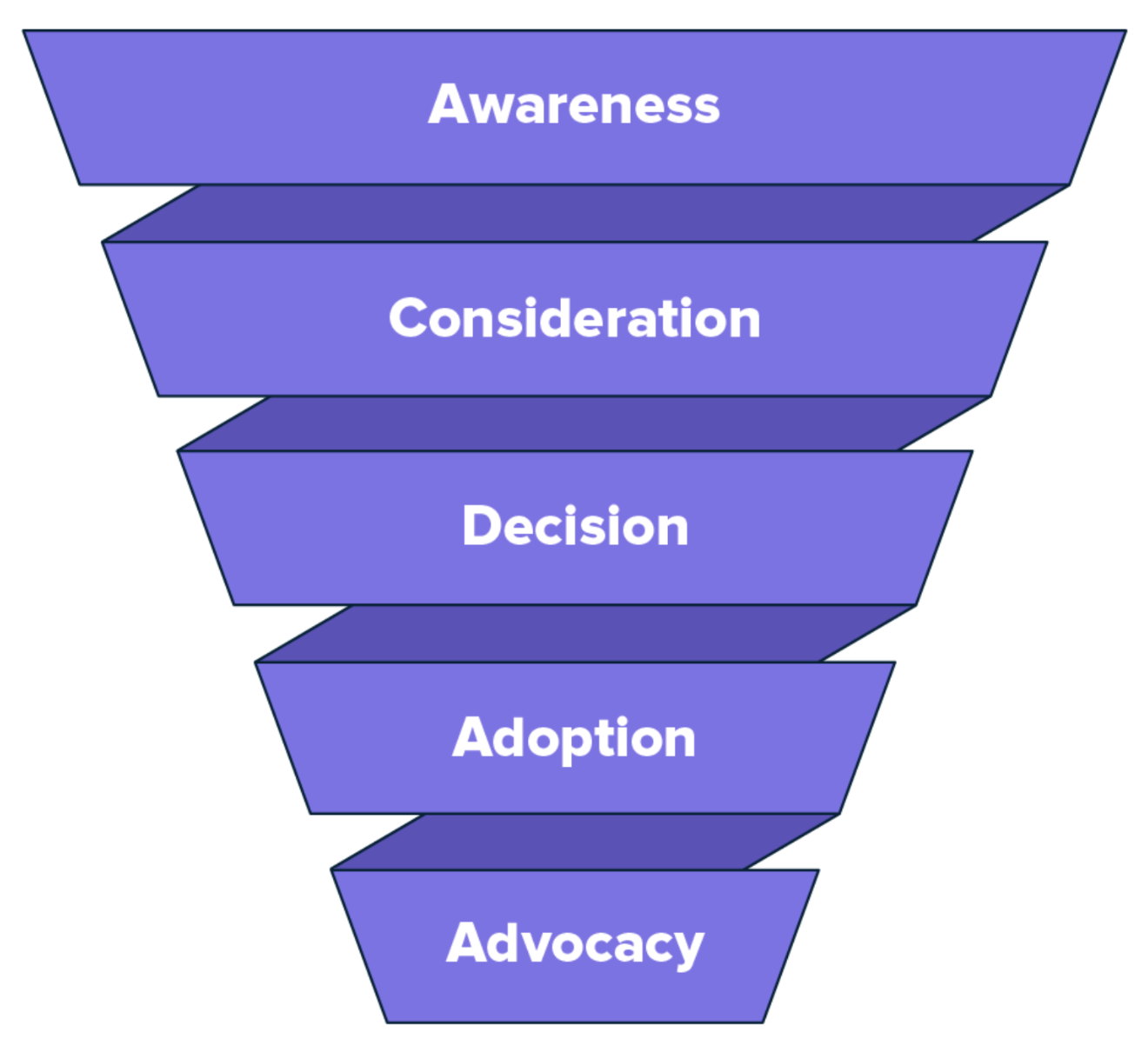
The customer journey map is divided into stages that usually fit within the funnel illustrated above. List out the stages to begin. Next, list out the main customer touchpoints that exist for your company. When you’re done with both lists, place the touchpoints into the different stages.
To get even more detailed, assign department owners to each touchpoint. You can identify where certain social media channels fit into the mix. And, you can assign predicted emotions or sentiments to different stages of the journey. It’s up to you how detailed you want the map to be.
5. Gather data and customer feedback
You need rock-solid data on how customers interact with your brand to create an accurate customer journey map. Focus on these three aspects:
Analyze existing data
Jump into the data you already have—more specifically website performance, chats with customer support and sales records. This information can tell you loads about how customers act, what they like and what frustrates them.
This quantitative data offers a foundational perspective on how customers interact with your brand, helping you identify both strengths and areas of improvement.
Conduct customer interviews
Get personal with one-on-one chats with customers. Ask them about their experiences, what bugs them and what they expect when they deal with your brand. These talks reveal qualitative insights that numbers can’t, like understanding the emotional and psychological aspects of the customer journey.
Create surveys and questionnaires
Turn to surveys and questionnaires for a more structured and broader approach to gathering feedback. Send them out to a bunch of customers and get structured feedback. Ask questions about their journey with your brand, how happy they are and where they think things could get better.
A combination of these three aspects gives you a 360-degree view of what your customers really experience with your brand.
6. Test and identify pain points
To confirm your customer touchpoints, you probably checked in on various departments and spoke to customers. This is great work but you need to take another step further: test it yourself. Go through the customer journey from the viewpoint of the customer.
While you’re testing the journey, keep an eye out for challenges, confusion or any frustrating moments. For example, if the website takes forever to load, if instructions aren’t clear or if reaching customer support is a headache, make detailed notes of these issues.
It’s also a smart move to collect feedback from both colleagues and customers who’ve gone through the journey. This way, you double-check and confirm your findings for a more complete picture.
A hands-on approach ensures your customer journey map reflects the real-world experience and equips you to take targeted actions to improve the overall customer journey.
7. Make changes and find solutions
So your map is complete. What’s next? You need to find or create solutions to the pain points you identified in the previous step.
Now’s the time to check in on the goals you established in step one and make the moves to smooth out the journey. Give yourself time and space to implement some of the solutions, whether a quarter or six months, and check back on the map to update it.
As you put these changes into action, make sure to watch your customer journey map closely. Don’t forget to keep it up to date to show the improvements and how they affect the customer experience. This keeps your customer journey map fresh and super useful for steering your brand toward delivering an exceptional customer experience.
4 types of customer journey maps and examples
Let’s take a look at the four most common customer journey maps and examples of each.
1. Current state
Current state customer journey maps are like an audit. You document how your customers experience their buying and service paths in your company’s current state. These are especially helpful to establish a baseline for your customer service experience.
Take a look at this simplified current state customer journey map from Nielsen-Norman.
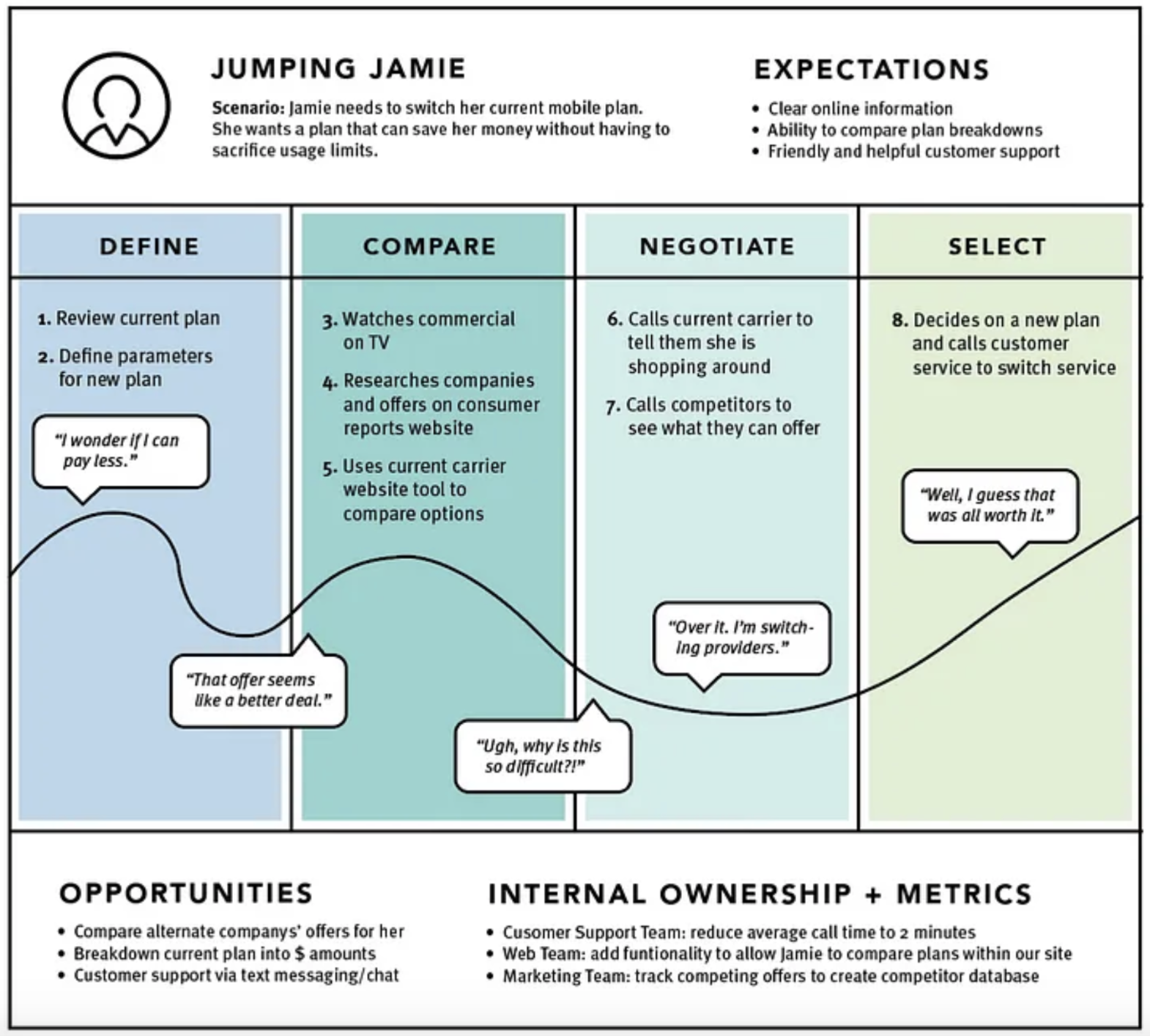
The map follows the journey of “Jumping Jamie” as they navigate the process of switching to a different mobile plan. The map defines the current journey into four stages. Apart from the journey, it also highlights opportunities and metrics to track.
Current state maps are fantastic for sharing user frustrations with all departments. This helps you get everyone on board with investing in solutions and brainstorming ways to address user pain points.
2. Future state
Future state customer journey maps follow the same format as current state maps except they represent the ideal journey. You can use them alongside your current state maps to identify painpoints and areas to improve.
Here’s an example of a future state journey map:
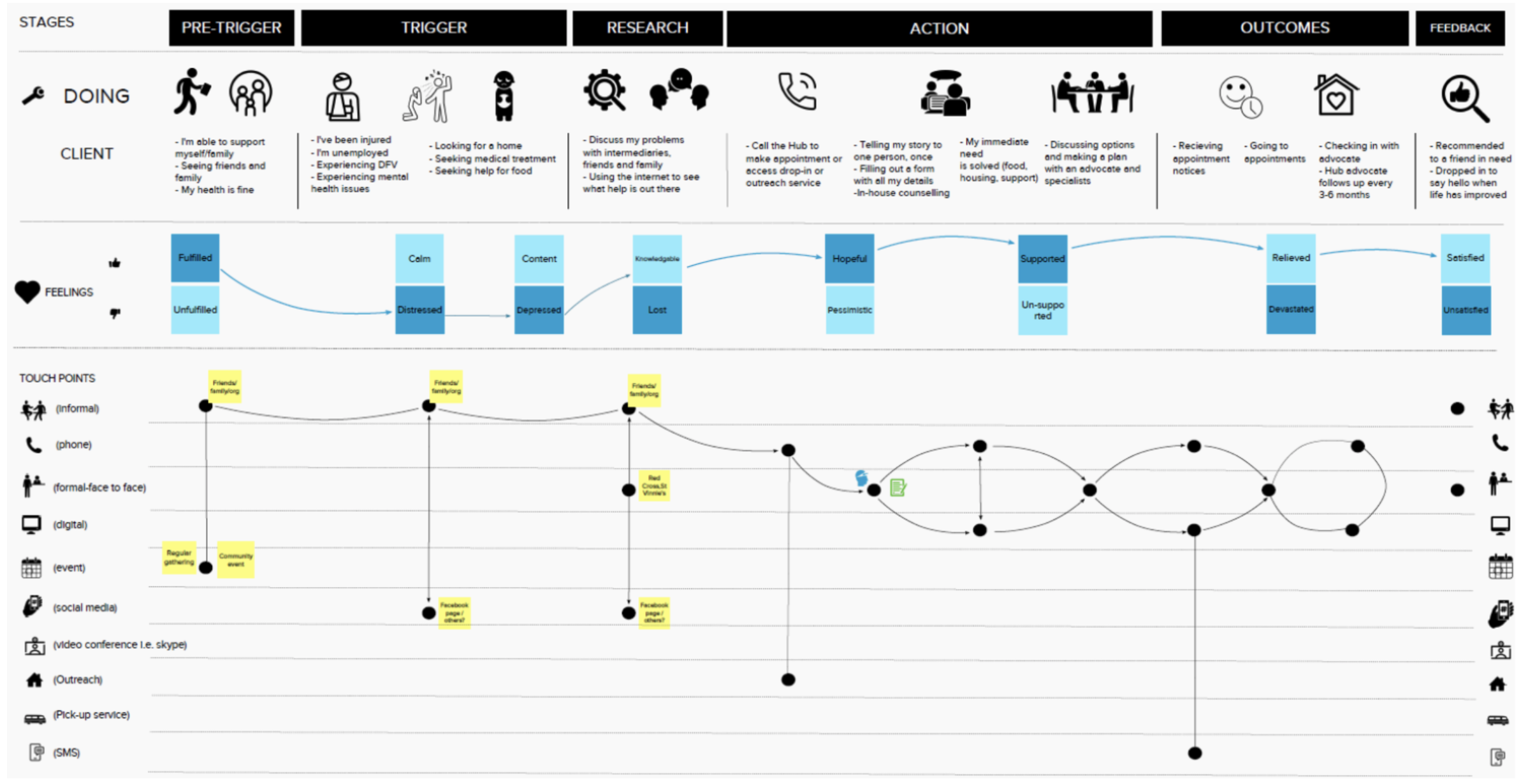
Why does this visual work? It covers different states, feelings and even touchpoints in a cohesive format.
The map visualizes the best-case scenario to create a north star vision for your brand. It aligns your efforts toward achieving the ideal customer journey.
3. Day-in-the-life
Day-in-the-life customer journey maps outline one of your persona’s schedules as they go about their day. The interactions may or may not involve your company. Creating one of these maps helps you identify the best times and areas to interact with your customer.
Here’s a “day-in-the-life” visual from Pipedrive.
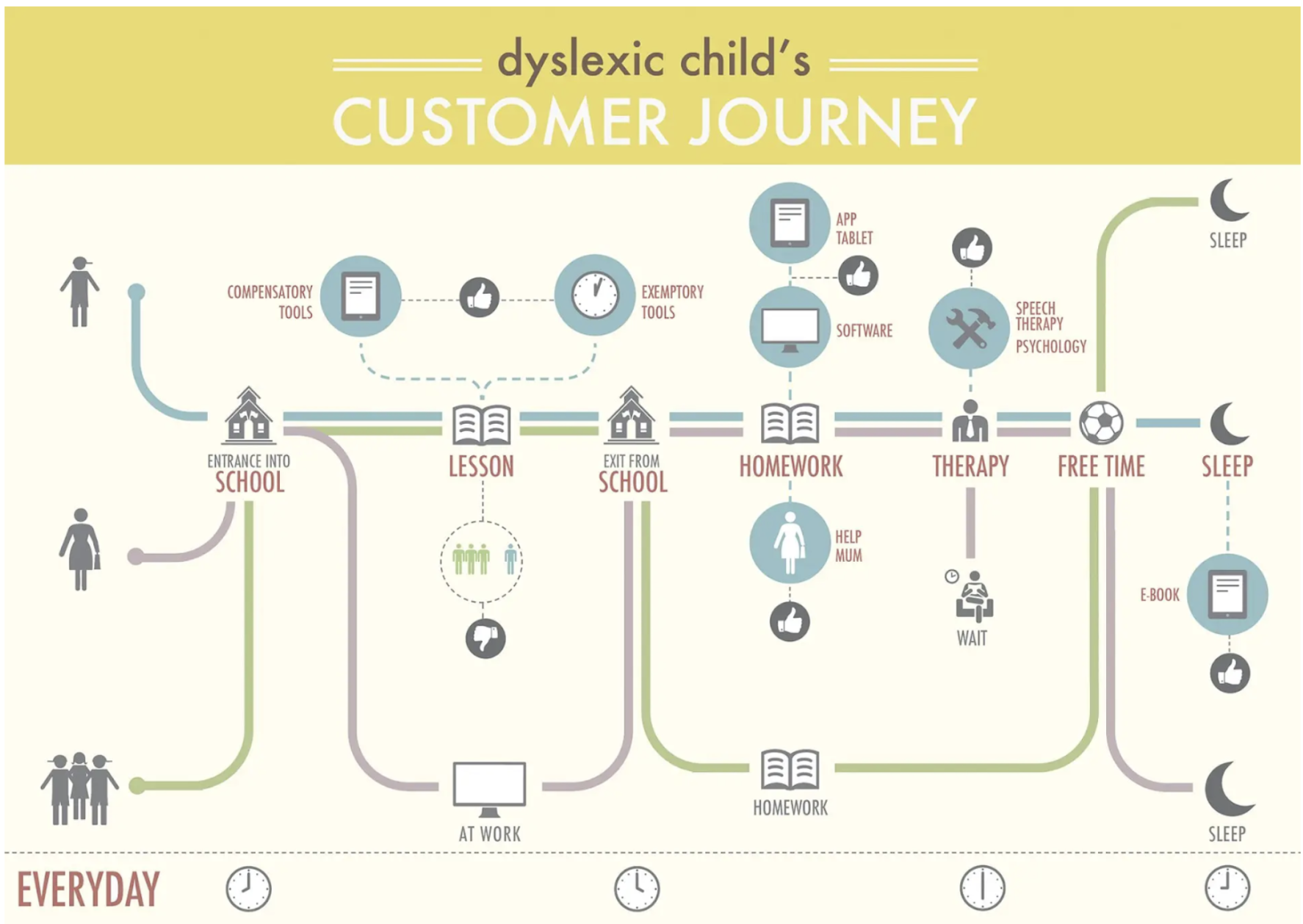
The map doesn’t just highlight when the persona does something, but it also highlights different touchpoints and the different people they interact with throughout the day. And, notice those thumbs ups and downs? Those highlight how the child feels during different activities too.
4. Service blueprint
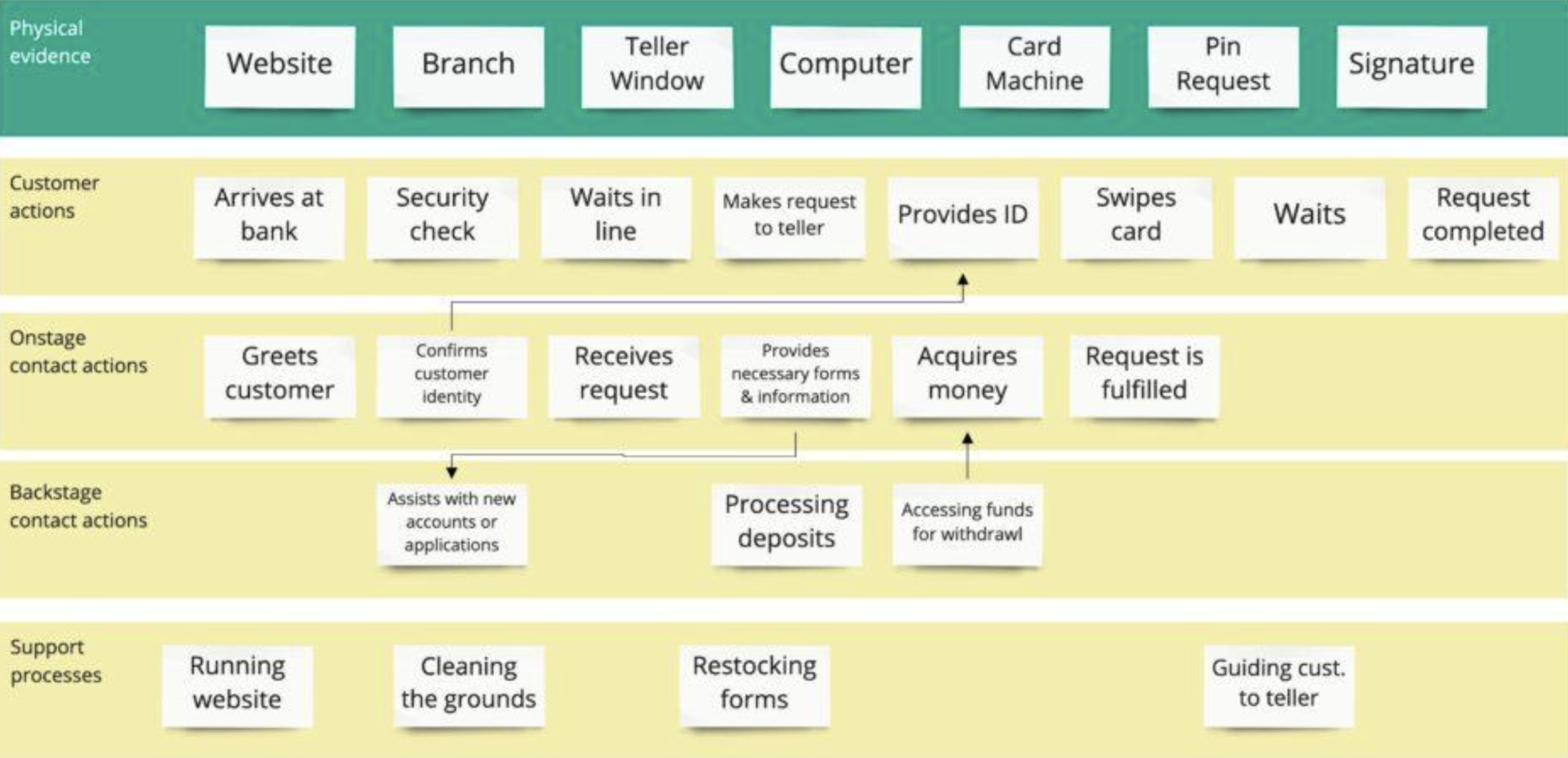
A service blueprint customer journey map focuses solely on when you provide customer service. It ignores components like ads that might exist in other maps.
Miro, a collaborative online whiteboard for teams, created the above map with a bank in mind. You’ll notice how this map is only about a customer’s visit to the bank. This type of map helps brands look at individual service areas and interactions. It’s a macro version of the current and future state maps.
Get started with customer journey map templates
Creating a customer journey map doesn’t have to be overwhelming. There are plenty of free and paid templates out there to help you create one. If you think you’ll need more guidance or many maps, some companies offer special software to design a custom map. Build your first journey map or improve your existing one with these options.
- Current state template, provided by Bright Vessel.
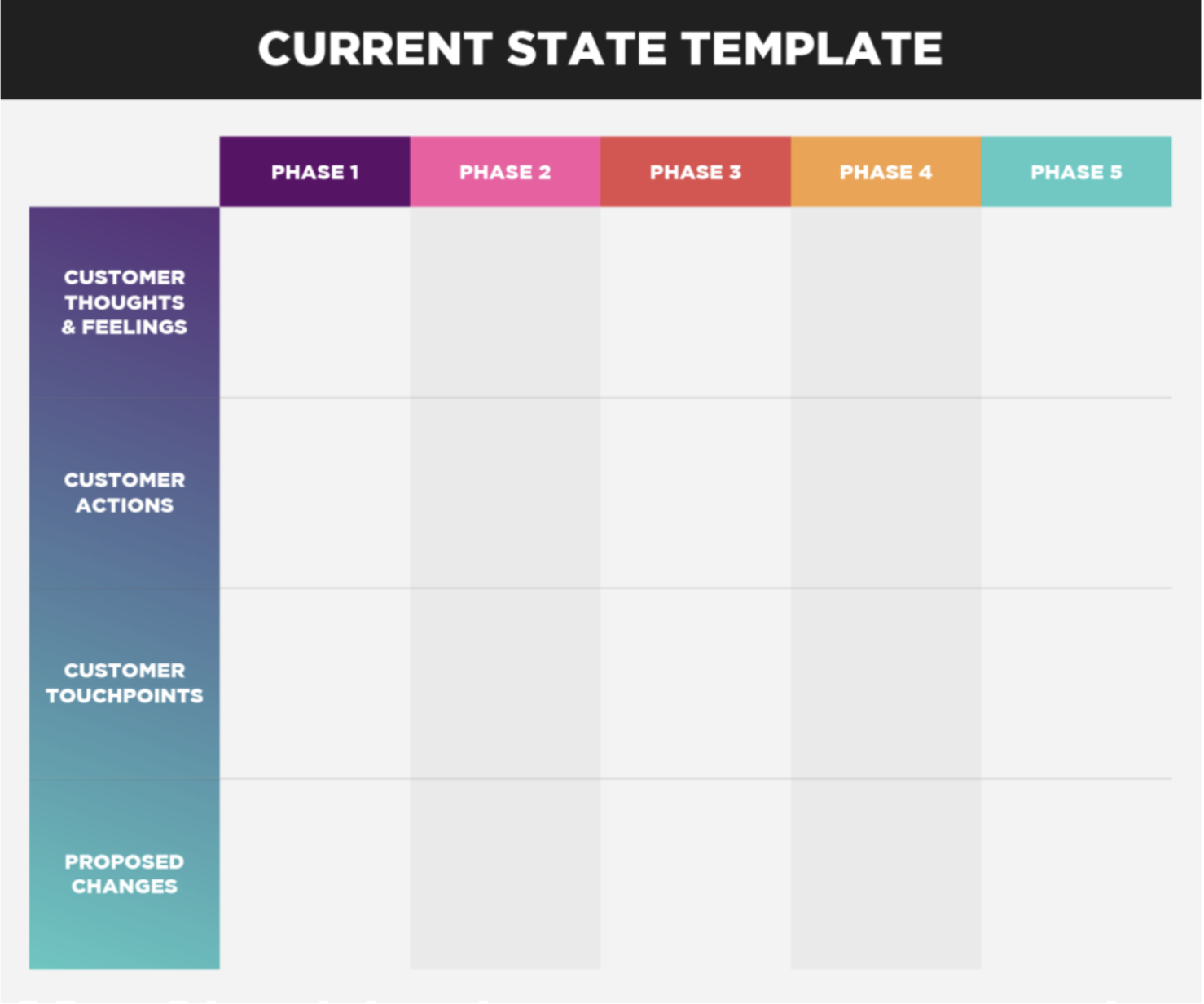
- Customer journey map template by Moqups, a design and collaboration tool.
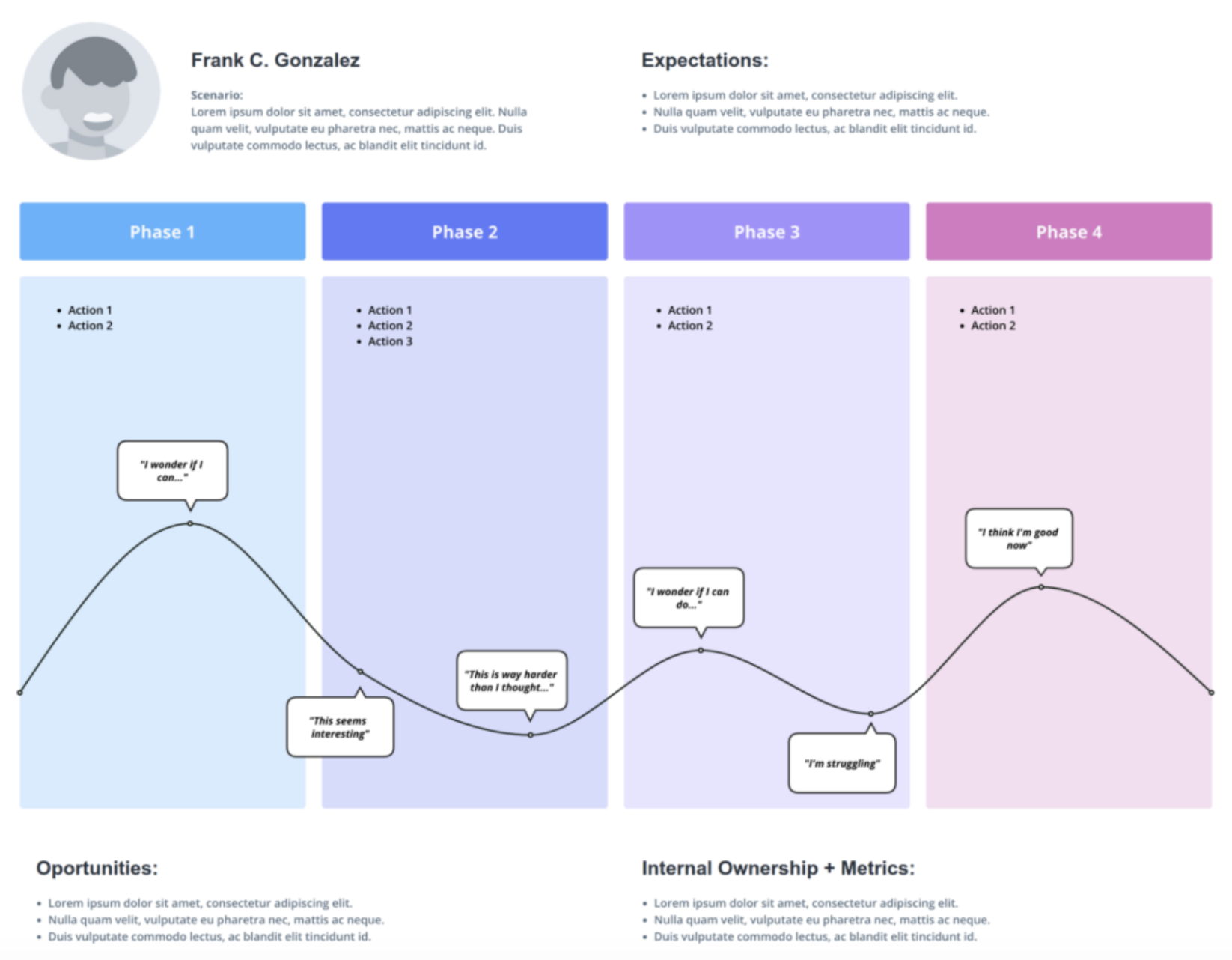
- Service blueprint template by Miro
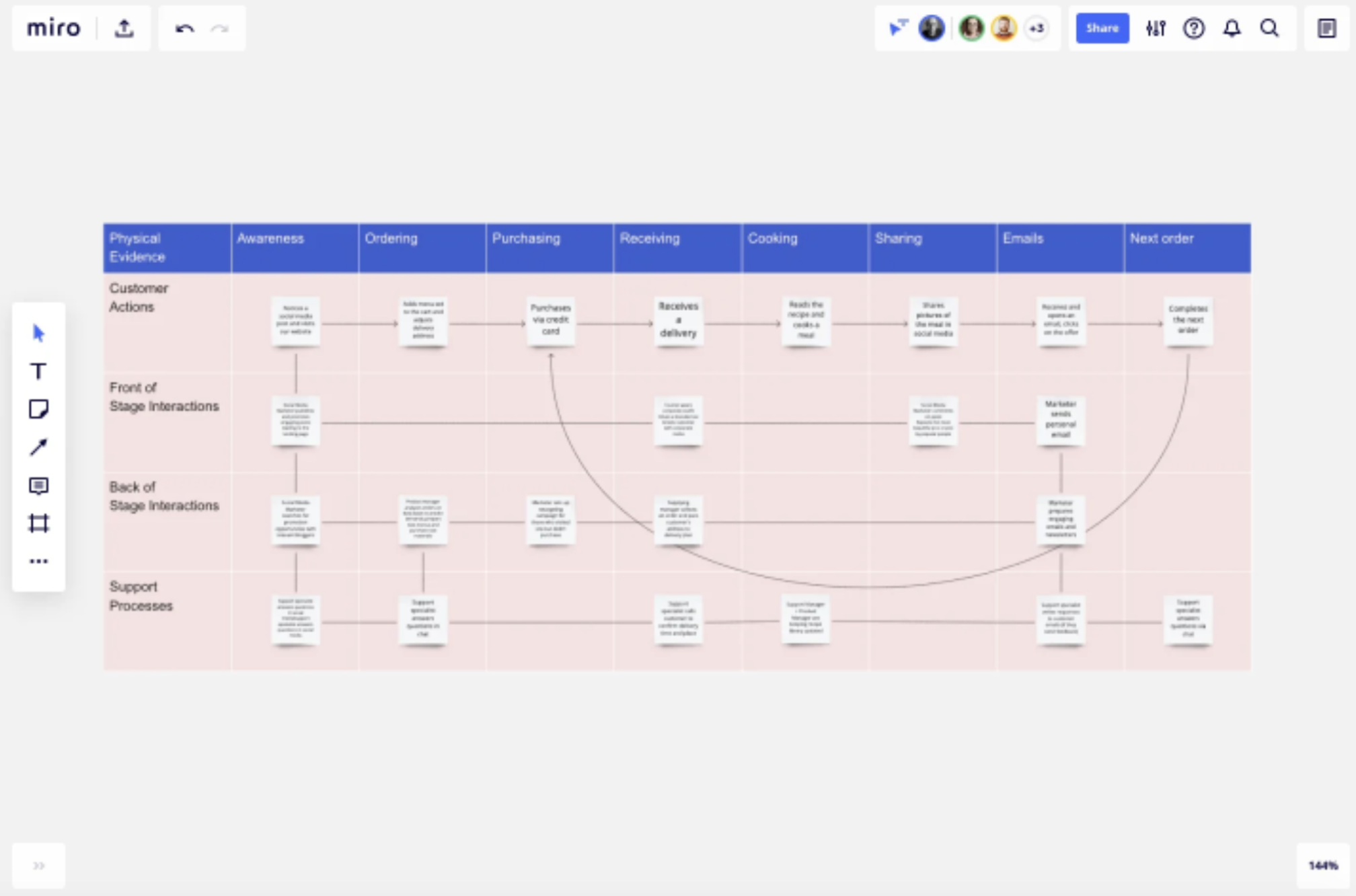
- Customer journey map template by Mural, a planning tool.
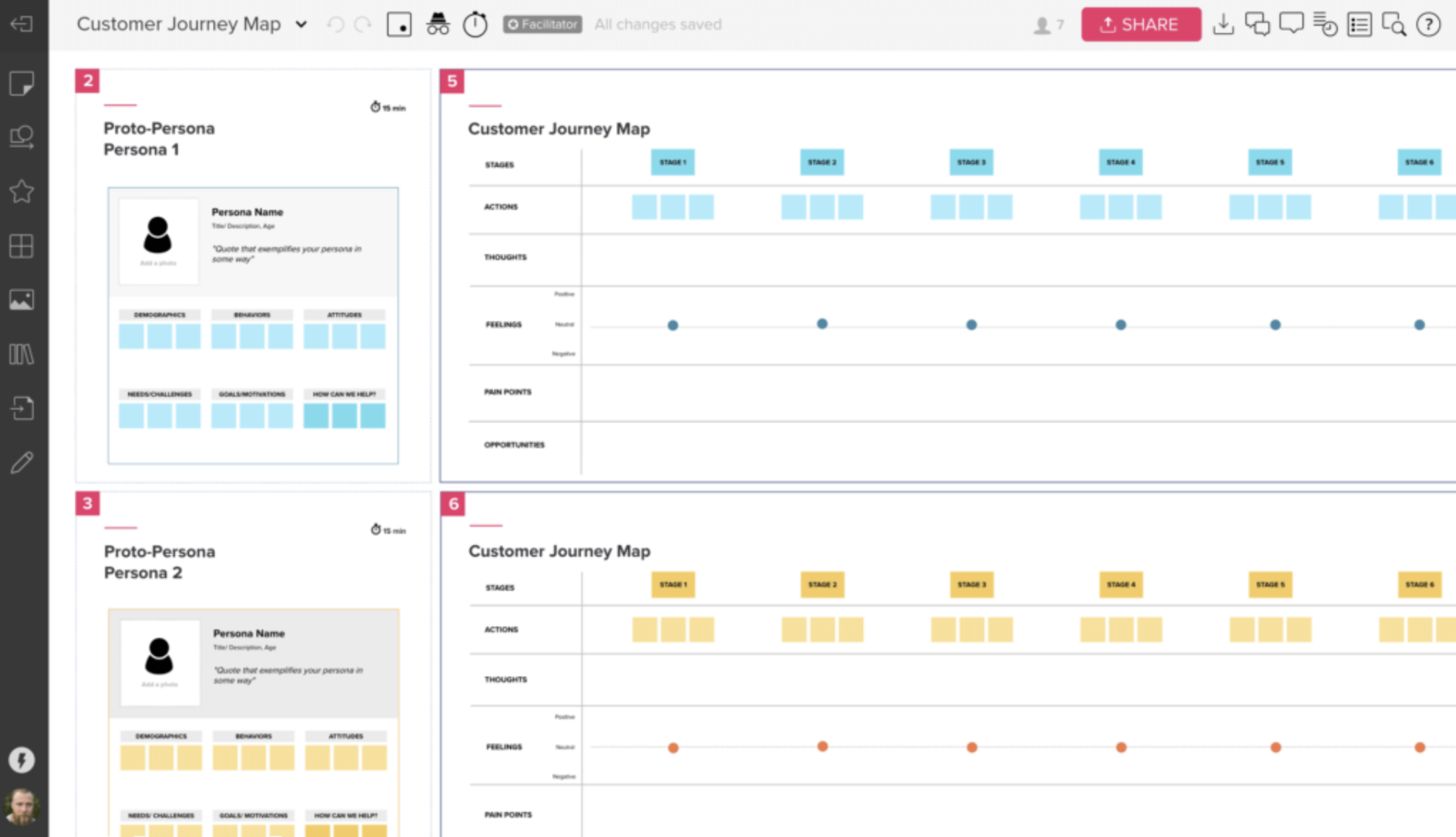
- UXPressia’s customer journey map online tool, made specifically to create presentation-ready customer journey maps.
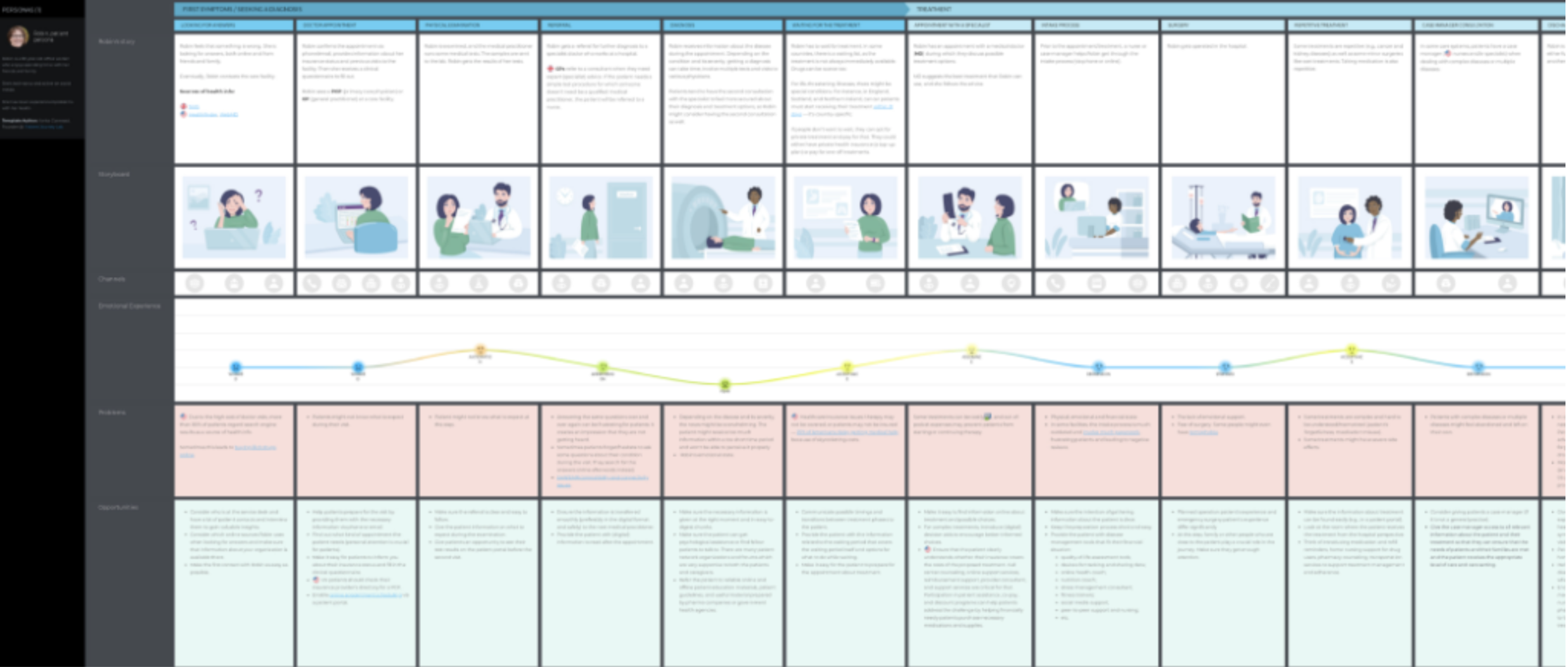
Create a strong foundation with a well-integrated customer journey map
A customer journey map gives you the recipe for crafting personalized, impactful interactions that build customer satisfaction and loyalty.
When you know what they are and why they’re important, it’s time to make yours. Use data to create a solid customer journey map that exceeds customer expectations at every touchpoint.
Check out how you can turn your B2B social media data into a revenue-driving powerhouse and create a memorable brand.
![What is a customer journey map and how to make your own [examples included]](https://wiredgorilla.com/wp-content/uploads/2023/11/what-is-a-customer-journey-map-and-how-to-make-your-own-examples-included.png 1760w, https://wiredgorilla.com/wp-content/uploads/2023/11/what-is-a-customer-journey-map-and-how-to-make-your-own-examples-included-300x236.png 300w, https://wiredgorilla.com/wp-content/uploads/2023/11/what-is-a-customer-journey-map-and-how-to-make-your-own-examples-included-1024x806.png 1024w, https://wiredgorilla.com/wp-content/uploads/2023/11/what-is-a-customer-journey-map-and-how-to-make-your-own-examples-included-768x605.png 768w, https://wiredgorilla.com/wp-content/uploads/2023/11/what-is-a-customer-journey-map-and-how-to-make-your-own-examples-included-1536x1210.png 1536w)

